Top Story
Framing the Conversation with Missing Middle Housing
What is “missing middle” housing, and why is it important for communities?
September 13, 2022
By Deborah L. Myerson, AICP
By Deborah L. Myerson, AICP
Connections between places, and connections among people: these are the key elements that shape downtowns and neighborhoods. “Linking Land Use and Transportation” was the theme of ULI Northwest Arkansas’s fourth Policy and Practice seminar.
Speakers and participants from the Community of Practice discussed the connections between land use planning, transportation planning, and housing development in communities—and how to advance more collaboration among agencies.
Speakers included:
Wes Craiglow, Executive Director of the ULI Northwest Arkansas District Council, moderated the discussion.
Are We Leaving Things Better Than We Found Them?
In his presentation, “Land Use, Transportation & Housing Affordability,” Mike Ludwig noted the influences and experiences that have had an impact on his career, particularly Ian L. McHarg’s Design with Nature.
As a planner, he noted, “You’re not just looking at a site for development. It’s what’s around you, and how your development fits in with that, and how your development treats nature and protects nature going forward…Carrying forward from a sustainability perspective in our city, and in our region: Are we leaving things better than we found them?”
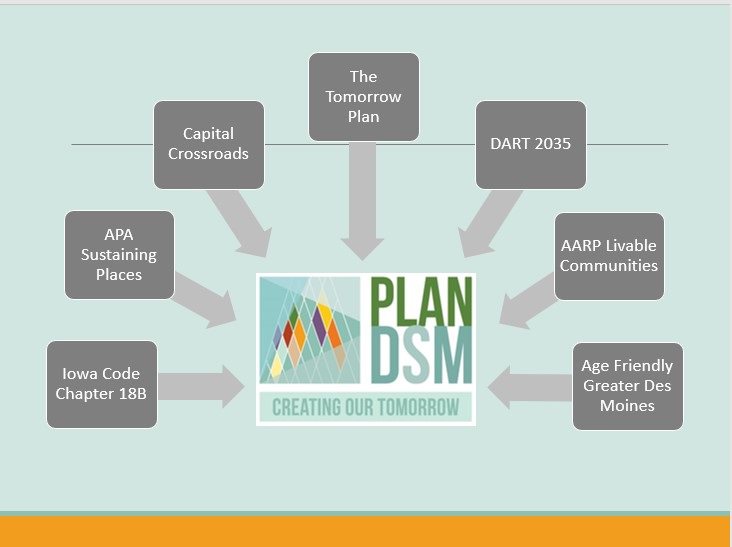
One of the ways Ludwig and his city of Des Moines, Iowa’s capital city, have sought to leave things better is through their comprehensive plan, “PlanDSM: Creating Our Tomorrow.” The award-winning 2016 plan was recognized by the American Planning Association (APA) for its values-based vision for the City of Des Moines and for integrating sustainability throughout the plan.
The plan helped to usher in many changes—such as removing downtown parking minimums, directing growth toward existing infrastructure, redeveloping nodes and transit corridors, and encouraging mixed-use development with a focus on form and design.
Ludwig explained that the long-term relationships with stakeholders such as business leaders and community organizations were central to the planning process. “We built those relationships over five, six, eight years with these groups to build support for what we were doing as a community.”
Change Is Incremental, Communication is Critical
Des Moines’ efforts also included the adoption of MOVE DSM, the first citywide transportation master plan in 2018. Ludwig reported that the research for the plan found that 23 percent of the city’s sidewalk gaps were within a quarter mile of a school, and 56 percent of sidewalk gaps were within a quarter mile of a transit stop. The result: the plan prioritized addressing sidewalk gaps to increase access to schools, bus stops and commercial nodes. In addition, the plan calls for adding 37 miles to the core bike network, to bring 86 percent of the population within a quarter mile of a high-quality bike facility and regional trail network.
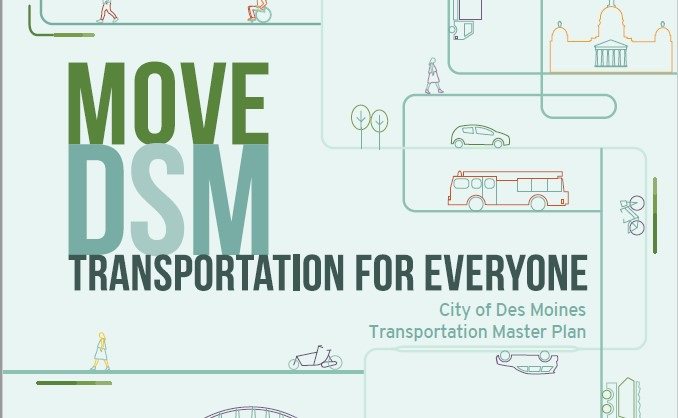
In 2013, the Des Moines Metropolitan Planning Organization adopted The Tomorrow Plan for the region, supported by a $2.2 million Sustainable Communities grant from the U.S. Environmental Protection Agency’s Office of Sustainable Communities. The Tomorrow Plan envisions a vibrant future for greater Des Moines. It seeks to convene the many agencies and organizations in the region, as well as area residents, to collaborate and coordinate efforts toward a shared future.
Des Moines’ Tomorrow Plan emphasizes the importance of creating regional transportation, housing, water, and air quality plans that are tied to local comprehensive land use and capital investment plans, as well as increased use of compact development.
Cumulatively, these planning efforts have incentivized scaling up density in single family neighborhoods with accessory housing units and “missing middle” housing and then adding more commercial development.
Yet, Ludwig noted that change is incremental, and communication is paramount. An important step, he emphasized, is to identify local champions. He explained that planners’ daily challenge is recognizing that not every policy will be in place to direct future development. “Most of it is just negotiation, and trying to make things incrementally better every time you get a chance.”
Connecting Active Transportation and Housing
As local commentators for the seminar, Steve Luoni and Ryan Hale offered their perspectives on opportunities to link land use and transportation planning in Northwest Arkansas.
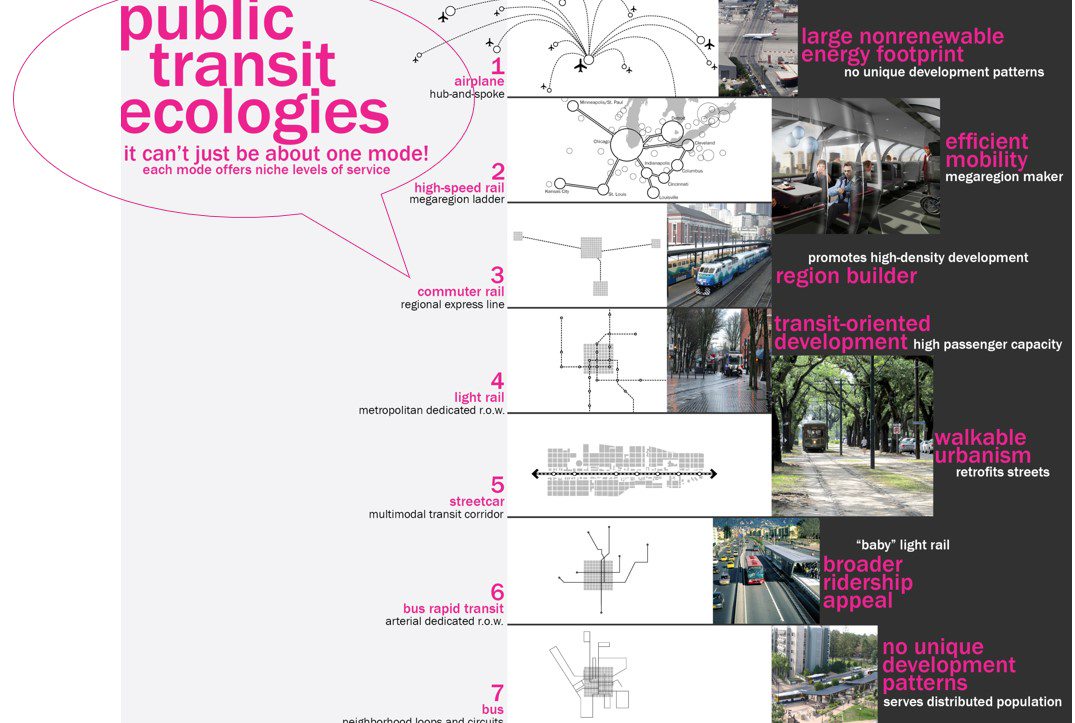
Luoni suggested that the most efficient to create change is to focus on a multimodal transportation. He commented, “Transportation should be an ecology with many different modes. Too many times, we are arguing for one mode over the other. But in thinking about the relationship of transportation, each mode has its place, a presence.”
For land use changes that prioritize equity, economic development, and livability, he suggested that design is a better tool than zoning.
“You go to any great city in Arkansas in the 1920’s and you see the fantastic DNA of great urban fabric. And it’s about relationships. It’s not about the kind of things that code set out. It’s really about rediscovering pattern languages,” Luoni observed.
He added that with Fayetteville’s typical low-density residential development, it would likely cost about $600 million for 300 miles of roadway and infrastructure to support four to five dwelling units per acre. Yet, Luomi cited a poll that reported that two-thirds of respondents said that they want a housing that’s served by public transit. ”The market hasn’t delivered,” he said. By increasing density between downtown and the mall, “You can get six new downtowns and get six new nodes—and you can actually align market demand with supply.”
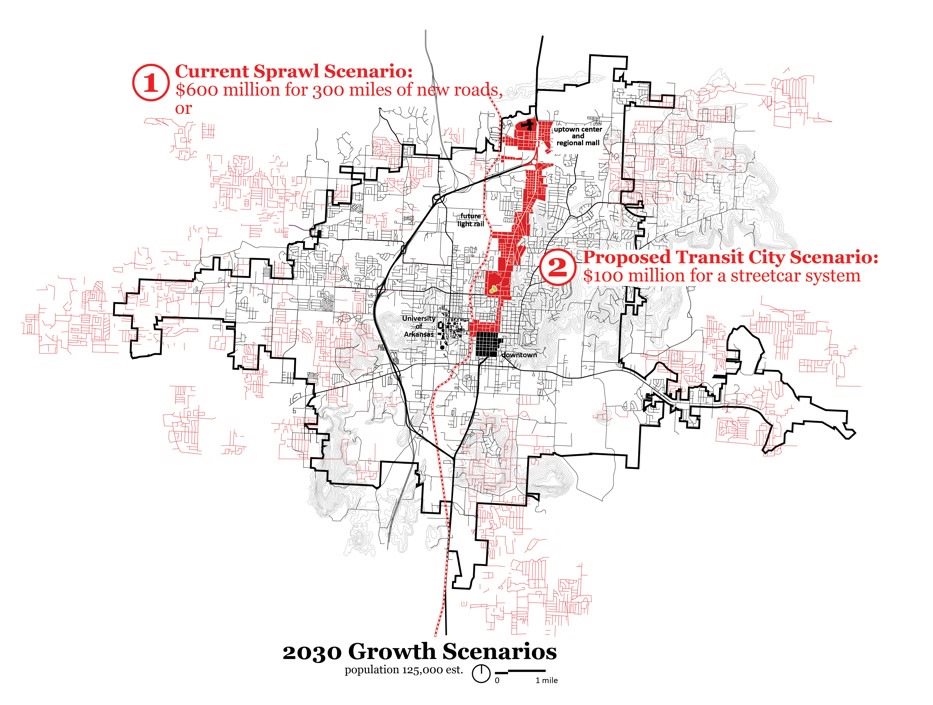
Ryan Hale suggested several strategies that planners can to advance active transportation and mobility—and connect housing in that process.
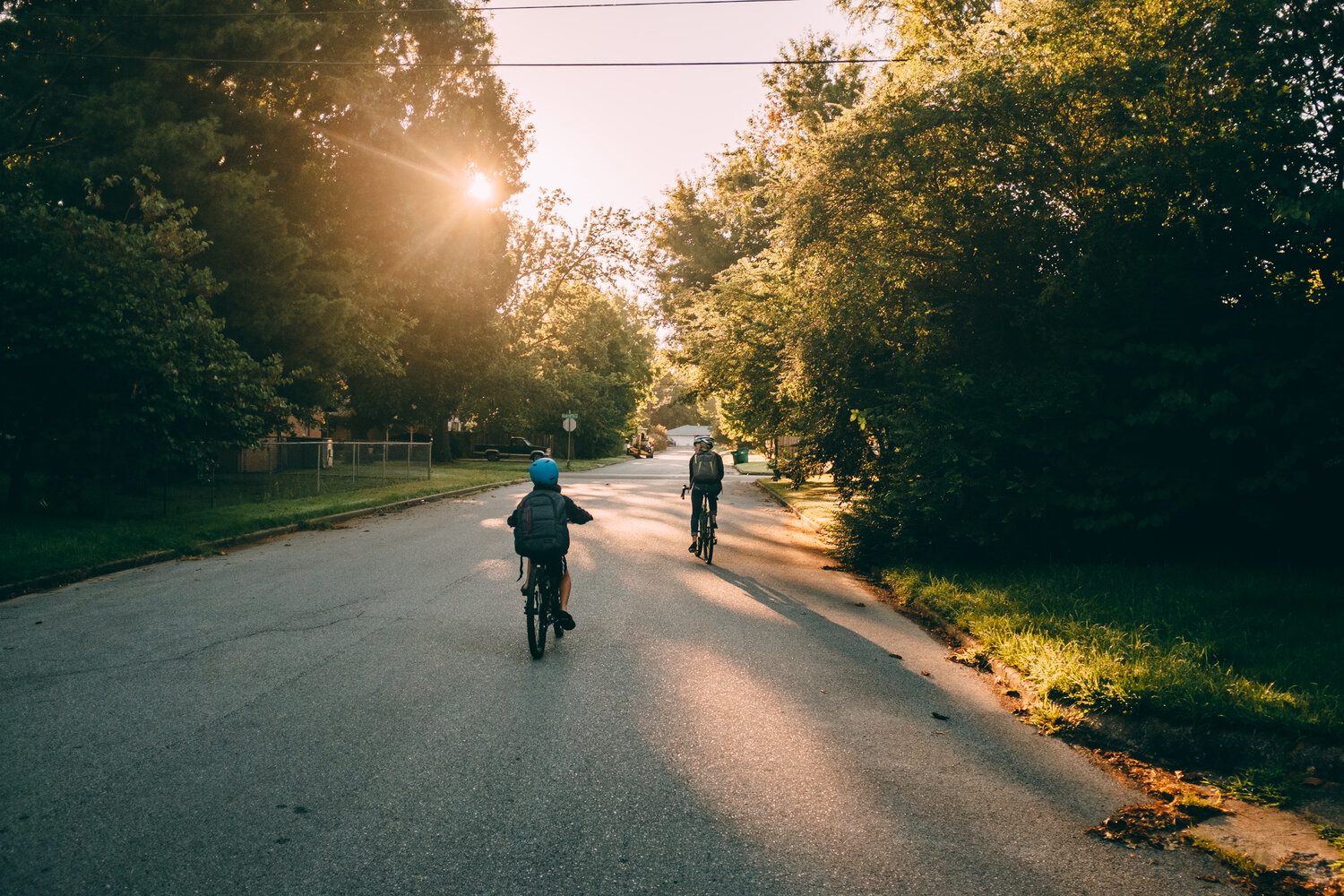
Infrastructure Drives Growth Patterns
Elizabeth Bowen was the final seminar speaker, presenting on the Northwest Arkansas Regional Planning Commission’s role in directing transportation planning for the region.
As a Metropolitan Planning Organization, the NWARPC supports joint cooperation and decision-making in the region’s transportation system improvements. NWARPC’s current membership includes 35 units of government in Benton, Madison, and Washington Counties, Arkansas; McDonald County and Pineville, Missouri; the Arkansas State Highway and Transportation Department (AHTD); the Missouri Department of Transportation (MoDOT); transit agencies; and Beaver Water District.
The NWARPC has created many plans and programs, including the NWA 2045 Metropolitan Transportation Plan, the Transportation Improvement Program (TIP), the Congestion Management Process, the NWA Transportation Alternatives Analysis, the NWA Regional Bicycle and Pedestrian Master Plan, and the NWA Open Space Plan.
Bowen explained that while NWARPC is primarily a transportation planning organization, they also look at housing, employment, green space, and green infrastructure. They work with the state demographer to assist with 25-year projections in transportation planning. Bowen noted that the metropolitan area population is projected to reach 1 million by 2045. She recommended keeping an eye on the street and trail projects being funded by NWARPC. “Those impact your transportation. It impacts where buses go, where your housing goes.”
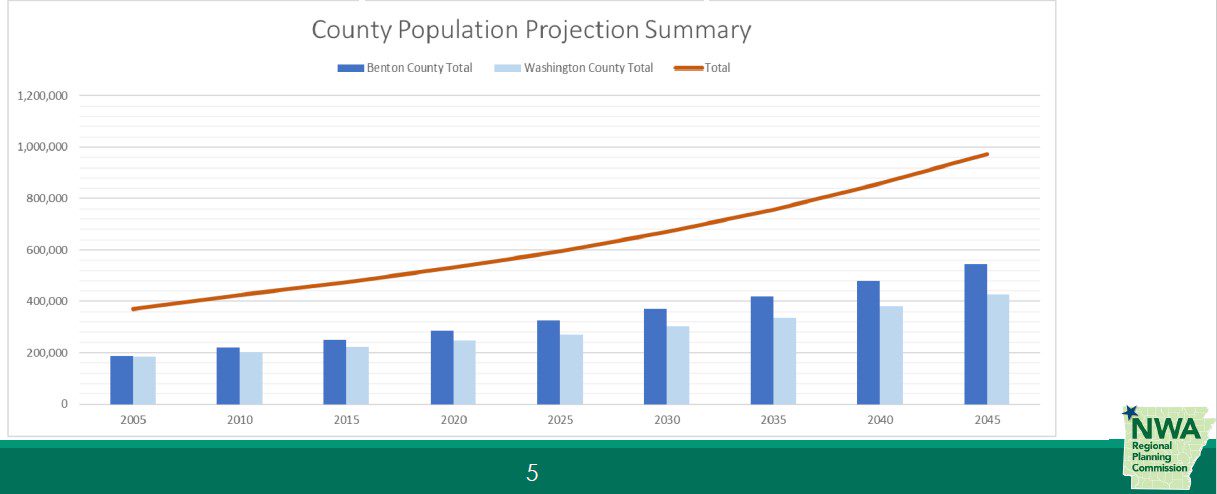
Wes Craiglow commented, “Where that transportation money flows, the landscape, the built environment will rise. That infrastructure is going to drive growth patterns.”
Bringing it Home
Members of the Community of Practice discussed how they could employ the ideas offered by the seminar presenters in their own communities. Proposals included:
CoP member Tyler Overstreet, Planning and Community Development Director in Bentonville commented: “It’s important that we embody the values that we see. If we want things to be at a pedestrian scale, we need to see it at and ensure that it is sensitive to context. We need to ensure that we are actually supporting the type of development we say we want.”
# # #
This event was part of the year-long “Aligned for Affordability” initiative hosted by ULI Northwest Arkansas, aimed at understanding our region’s housing market, identifying constraints to housing production in varying forms and locales, and advancing policy recommendations that ensure lasting affordability and vibrant neighborhoods to the working families of Northwest Arkansas.
Deborah L. Myerson, AICP, is a housing and community development consultant based in Bloomington, Indiana.
Don’t have an account? Sign up for a ULI guest account.